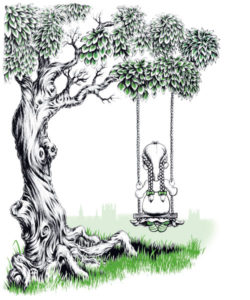
The impact of printing on the environment is often overlooked. It’s not just a matter of using recycled paper: from electricity usage to harmful chemicals, there are many ways the printing industry affects the environment. And yet, printing has the lowest take-up of environmental policies of any major industry.
At Oxford GreenPrint we do most of our printing on a Risograph printer, which has several environmental advantages:
- Inks: Risograph inks are made from vegetable oils, not hydrocarbons, and therefore are healthier to both the environment and the workers. This makes our printed material compostable.
- Electricity usage: a Riso printer uses only a sixth of the electricity of a digital one. That means our business uses very little energy.
- Waste cartridges: unlike toner cartridges (used in laser printers), which are carcinogenic, Rico ink cartridges can be changed without health implications. And all of our empty ink cartridges are recycled.
- Paper: we use only 100% recycled paper made from post-consumer waste paper and card. This means less trees are felled, and less paper-waste is sent to landfill. Deforestation is a huge problem in many parts of the world. It harms local people and wildlife, and often brings soil erosion and increased flooding later.
- We do not use glossy paper. Glossy or pre-coated paper is not normally made with plastic but with a special china clay that is dug out of a huge open-cast mine in Cornwall. This is a non-renewable resource and makes the paper harder to recycle.
NB: We do also have a laser printer for the occasional full-colour print-job, such as the cover of a booklet or a poster that relies on full-colour to be effective. But we encourage our designers and clients to adapt their designs to work on the Risograph printer.
